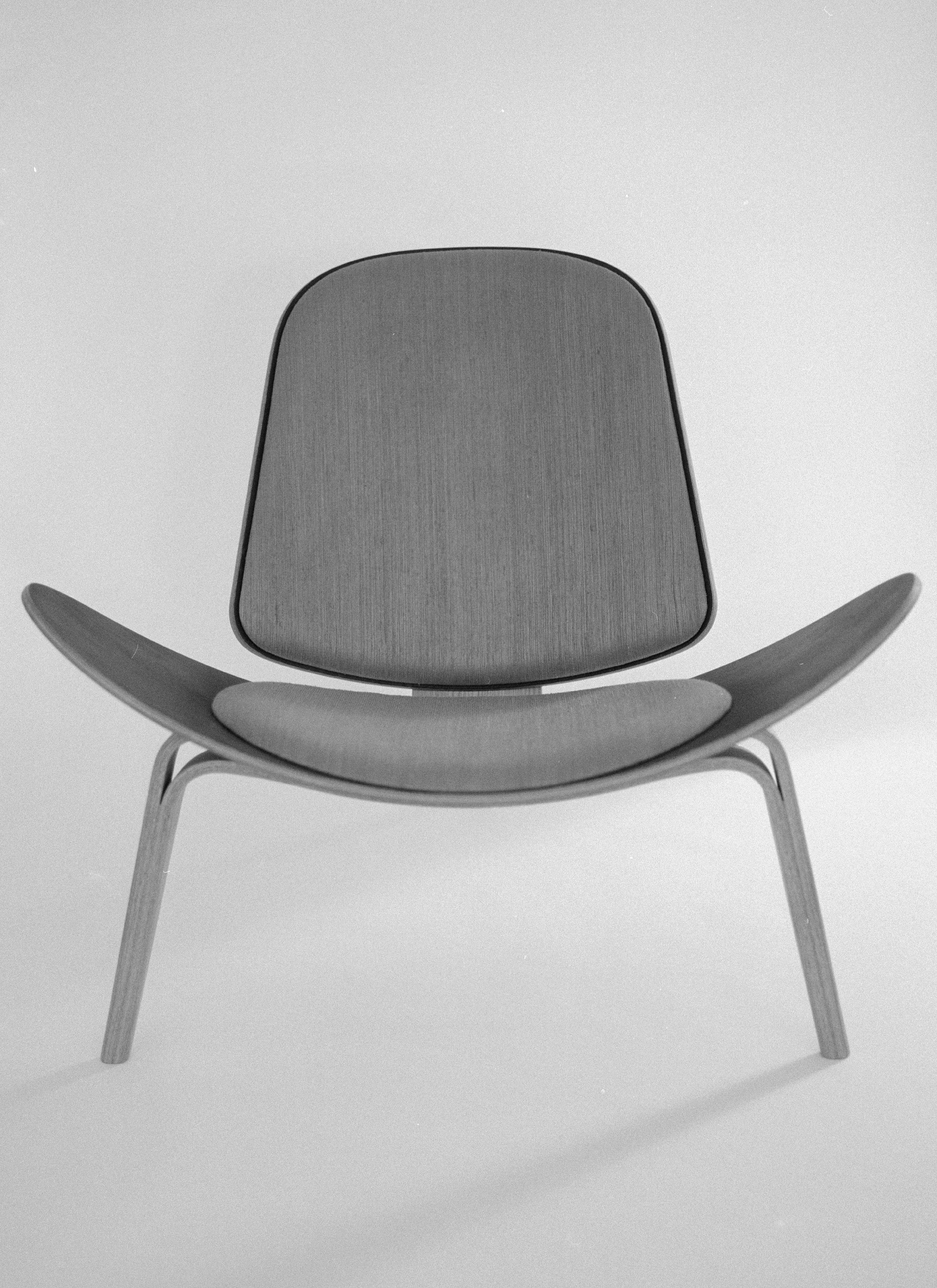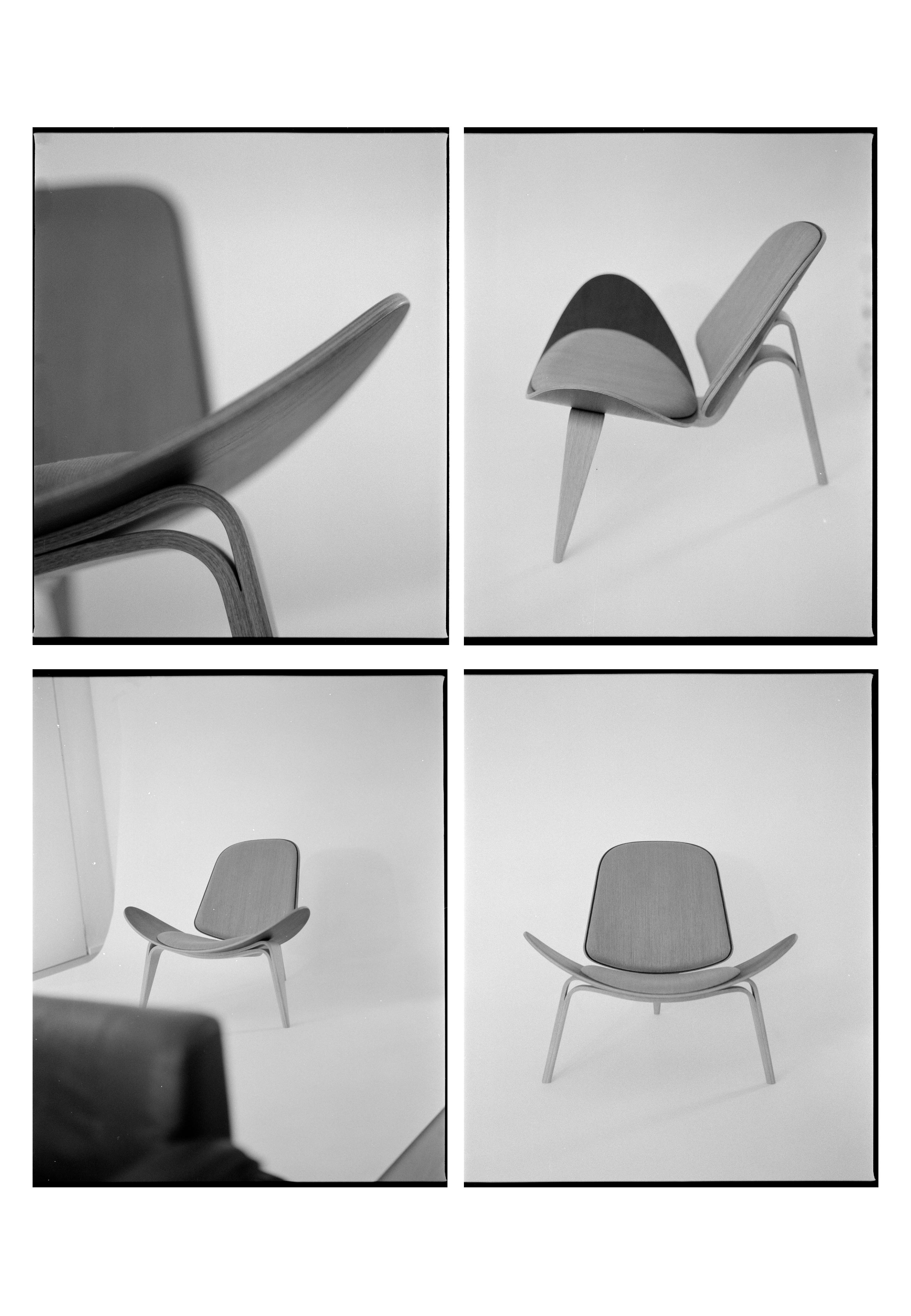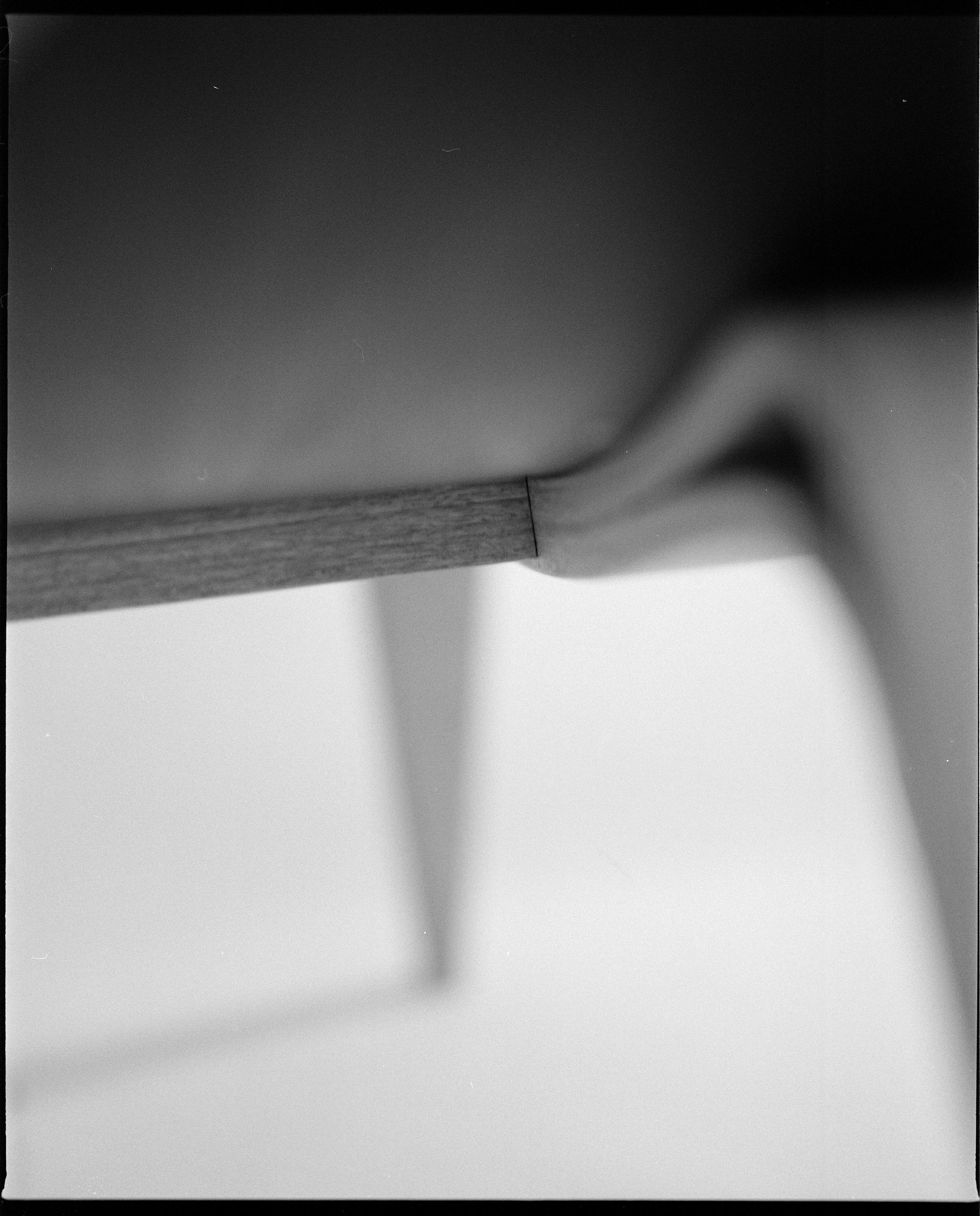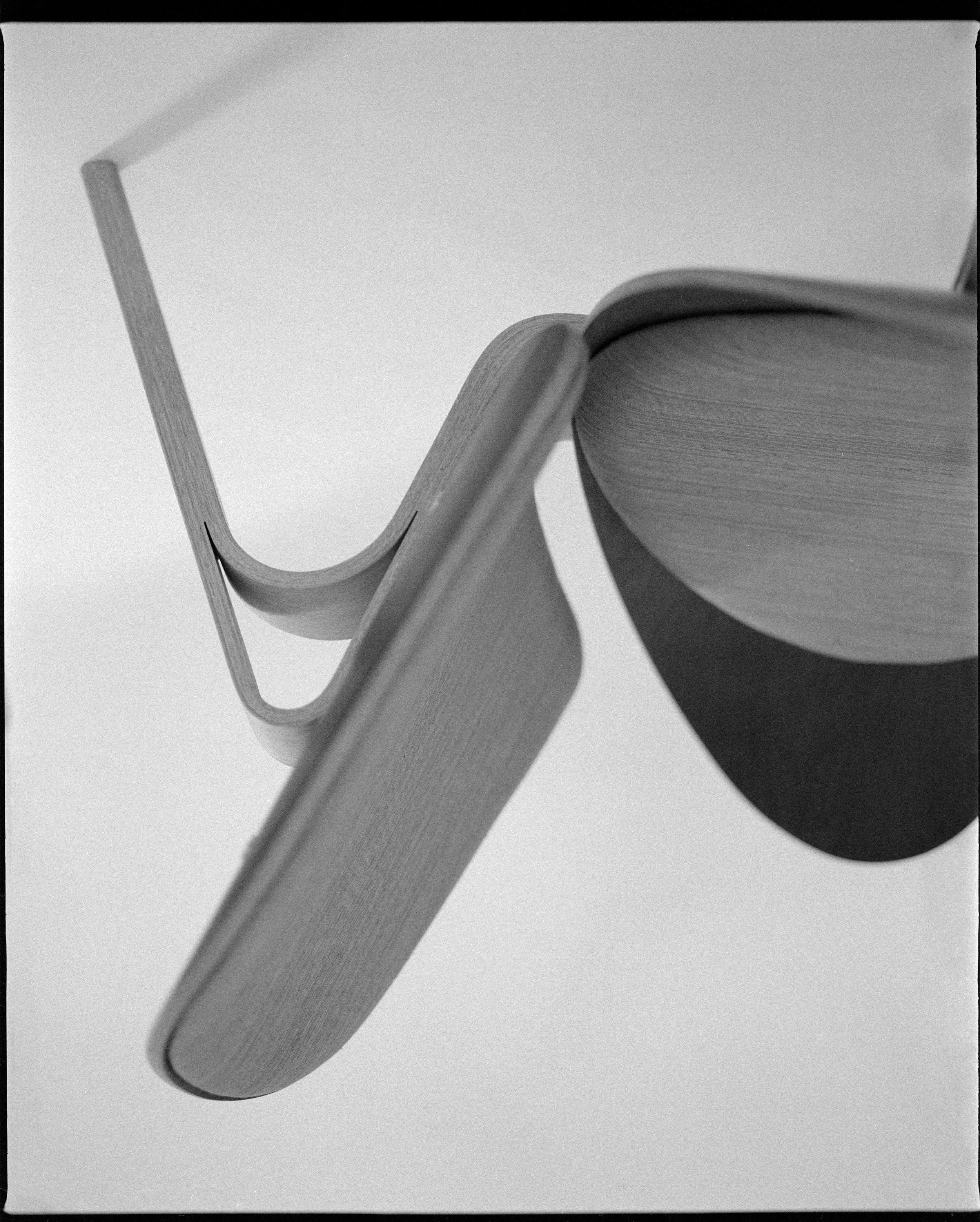A SHELL-
SHAPED
ICON
designed in 1963 by Hans J. Wegner
The 1960s were a decade of change—a spirit embodied in the futuristic Shell Chair by CARL HANSEN & SØN. Danish furniture designer Hans J. Wegner designed the chair in 1963 with the intention of creating an object that is both unique and comfortable but also affordable. Wegner experimented with new technologies. The process of creating the chair was special at the time, especially the production of the formed veneer was unheard of. But the effort was worth it. The result was a chair that actually looked futuristic, something new that had never been seen before at the time. A completely new aesthetic for the designer, more in line with the designs of his contemporary fellow American pioneers Charles and Ray Eames. When the model was first presented at the Furniture Guild Exhibition in Copenhagen in 1963, it polarized the public: some loved the pioneering design, others were highly critical. However, the new design piece challenged clients and architects to integrate the chair into suitable projects and houses. Due to low sales figures in the early 1960s, the chair was only produced in small quantities.
In 1997, the tide surprisingly turned: two original chairs from 1963 fetched 20,000 pounds per chair at a Sotheby’s auction in London which brought the object widespread public recognition. Carl Hansen & Søn were quick to respond, bringing the Shell Chair—also known as CH07—back into production in 1998. The rediscovered design skillfully combines minimalism and functionality with its generous shell-shaped seat and curved chair legs. Today, CH07 has iconic status—which is arguably long overdue and demonstrates how visionary Wegner was as a designer back in the early 1960s.
ANZEIGE
A chair that actually looked futuristic, something new that had never been seen before at the time. A completely new aesthetic for the designer, more in line with the designs of his contemporary fellow American pioneers Charles and Ray Eames.
The story of Carl Hansen & Søn begins in 1908 in a small furniture workshop in Odense, Denmark. Master carpenter Carl Hansen made custom pieces with the goal of producing first-class furniture at a reasonable price—everything from dining room furniture to bedroom furniture was part of the range. As the company grew larger and times changed, manufacturing shifted more and more to smaller series of the most popular pieces. This combination of craftsmanship and streamlined mass production soon became the hallmark of the company and still is today. Until the mid-1940s, Carl Hansen & Søn collaborated with the famous Danish architect Frits Henningsen. Henningsen designed a series with Windsor chairs, some of which were still produced by Carl Hansen & Søn until 2003. In the late 1940s, Hans J. Wegner joined Carl Hansen & Søn as a designer and exclusively created various chairs for the company. These include the legendary CH22, CH23, CH24, CH25 and, of course, the CH07.
In his lifetime, Wegner designed more than 500 models, most of which were wooden chairs. He is known as one of the main representatives of Danish modernism and his chair designs also paved the way for the international breakthrough of Scandinavian design after the Second World War. At that time, the rule in furniture design was form follows function—the production of reduced furniture that was functional and practical. Followed by the visual expression.
Carl Hansen & Søn, with its production site in Gelsted on the island Funen, produces today mainly designs by leading Danish architects, which were created between the 1930s and 1960s, but have lost none of their relevance and topicality in the past decades.







